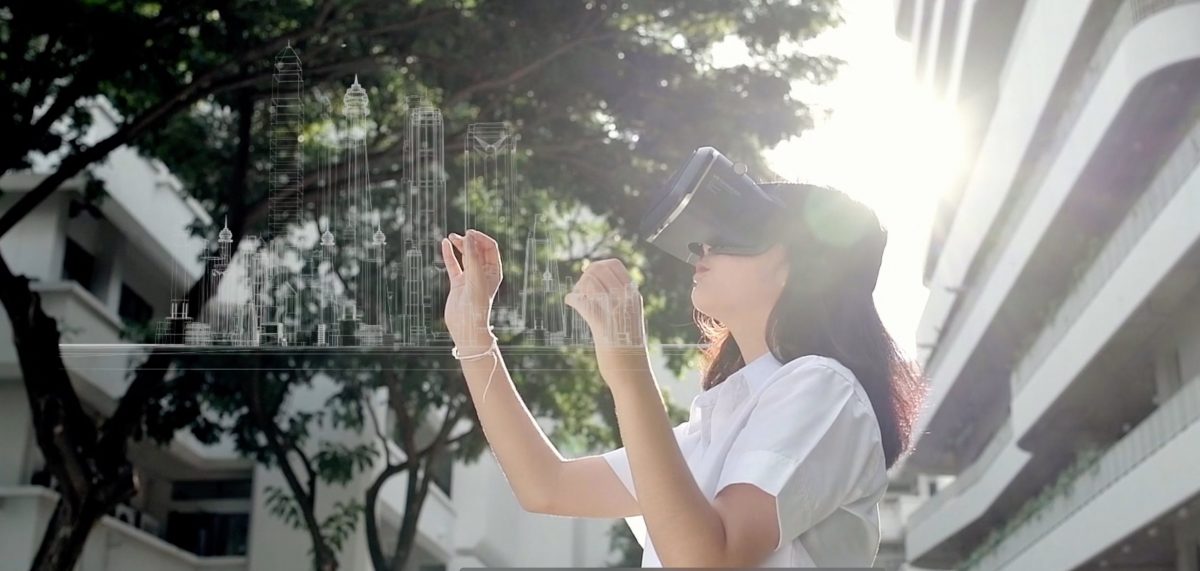The COVID-19 pandemic has accelerated the shift towards a more online and digital-driven world. With the need to transition education to an online format, a key challenge is how to ensure that students can understand the lessons and have an immersive learning experience with as much real-world visualization as possible. Educational media could be the solution. Dr. Julapoj Jirawatjadej, a professor from the Department of Civil Engineering and the Associate Dean for Planning and Development at the Faculty of Engineering, King Mongkut’s University of Technology Thonburi, who has a strong interest in integrating modern media into teaching, took this opportunity to experiment with using virtual reality technology to enhance students’ learning experiences.

The Beginning of Experimenting with VR Technology
“We have been interested in integrating media into teaching for over ten years. We’ve explored various types of media, especially in the virtual reality group, such as VR (Visual Reality), AR (Augmented Reality), and MR (Mixed Reality). The real experimentation started during the COVID-19 outbreak. In the past, we made videos and uploaded them to a website in collaboration with the university library. With the shift to online learning due to COVID-19, I realized that these technologies were important and could contribute significantly. We were fortunate to collaborate with a team already working on related programs, so we started experimenting and implementing them in the last academic year, with positive feedback from students.”
Dr. Julapoj Jirawatjadej, a professor from the Department of Civil Engineering and the Associate Dean for Planning and Development at the Faculty of Engineering at King Mongkut’s University of Technology Thonburi (KMUTT), shared his journey of experimenting with virtual reality in teaching. He explained, “We are still at an early stage of experimentation. Since we had a group of 4th-year thesis students working on this project, we decided to implement it with other students and collect feedback through surveys. It hasn’t reached the level of formal testing or being fully applied in classroom teaching yet. We’re interested in understanding how students feel about its effectiveness in terms of better comprehension and visualization. It’s still in the experimental phase, but in the long term, we’re aiming to develop teaching media aligned with new learning methods.”
Understanding VR, AR, and MR Technologies
Dr. Julapoj introduced the three technologies he was focused on developing into educational media: “In this group, there are three similar technologies. First is VR, or Virtual Reality, which creates simulated environments, either real or imaginary, using computer technology. Users experience visuals, sounds, and other sensory inputs through devices like VR headsets or gloves. The second is AR, or Augmented Reality, which blends 3D graphics with the real-world environment, accessed via devices such as smart glasses or mobile applications. By scanning a QR code, users can view a virtual overlay. Lastly, MR, or Mixed Reality, combines the real world and digital elements, allowing users to interact with both real and virtual objects. This technology is increasingly being applied in various fields.”
How Was It Implemented?
“We’ve noticed for some time that civil engineering involves a lot of physical interaction. Students often have limited experience with equipment and mechanics, making it difficult to visualize concepts from textbooks or lectures. Initially, we started with 3D printers, allowing students to work on real bridge models. However, this method was resource-intensive, so we switched to 3D printing, which lowered costs. It worked well until the pandemic hit, which forced us to explore remote learning. That’s when we turned to AR, VR, and MR technologies, as we foresaw an increase in distance learning. While it was challenging, we began with AR because most students had smartphones and tablets, making it more accessible. Our goal was to give students real-world experiences without wasting resources. For example, we modeled structures like beamless buildings, which we plan to use soon.”
What Was the Reception?
“Last year, it was just a short trial, not yet fully integrated into the curriculum, as we couldn’t access the buildings for testing. However, initial survey feedback from students indicated that they preferred this method over traditional lecture notes, especially in terms of visualization and deeper understanding. While the content only covered about one-third of the course material, the response was promising. In the future, we plan to conduct more rigorous testing to evaluate its true effectiveness.”
Future Development
“Currently, there are a few dimensions we want to expand on. First, we aim to incorporate AR into more courses, such as building design, making it more foundational for undergraduate learning. Second, we want to create more interactive digital labs, possibly a VR lab, for simpler subjects that are more suited to automation. For more complex subjects, we may need more time to develop. Finally, we’re exploring the future of online discussions and remote meetings, possibly moving beyond tools like Zoom to using 3D holograms as network technology advances to 5G. The future of VR could lead us there, and that’s another project we’re excited to push forward.”
Dr. Julapoj Jirawatjadej
Professor, Department of Civil Engineering
Associate Dean for Planning and Development, Faculty of Engineering, KMUTT


